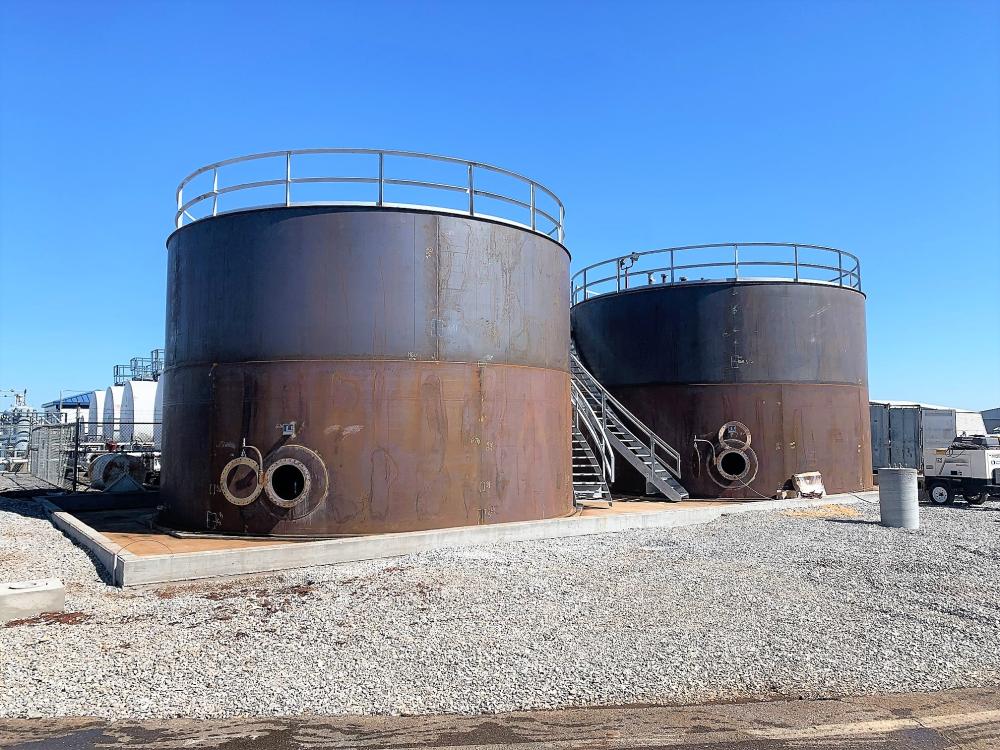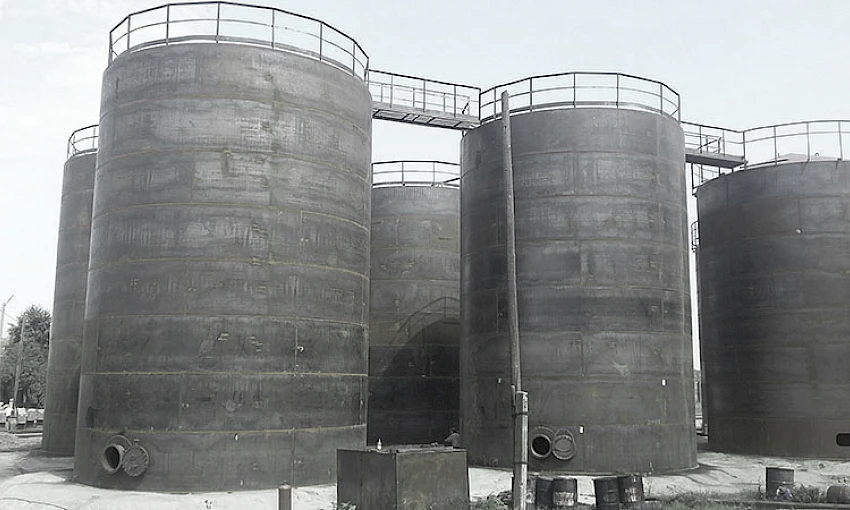Understanding the Relevance of Welding Assessment in Quality Control Processes
Welding assessment is an important component of high quality assurance in building and construction and manufacturing. It assures that welds adhere to well-known criteria, which is critical for structural stability. Various examination techniques, from visual to ultrasonic testing, aid identify defects early. This proactive approach not just stops pricey repairs however additionally boosts safety and security. Understanding the subtleties of welding inspection can reveal its wider implications for sector conformity and track record. API 650 Welding Inspection. What lies below the surface of these practices?
The Function of Welding Inspection in Quality Control
While welding is a crucial procedure in numerous sectors, its top quality and honesty hinge significantly on effective evaluation methods. Welding inspection acts as a safeguard, guaranteeing that welds satisfy well established criteria and requirements. This process not only identifies flaws but likewise examines the general handiwork, thus contributing to the safety and security and long life of welded structures. Inspections are important to quality control, as they help preserve and prevent pricey failures conformity with market laws. By using proficient assessors, organizations can boost their operational effectiveness and copyright their reputations. In addition, the understandings got from inspections can educate constant improvement, resulting in better approaches and training for welders. Ultimately, welding evaluation works as a crucial link in the quality control chain, guaranteeing that every joint is qualified and reliable of holding up against the rigors of its desired application. This persistance is necessary for the integrity of facilities and the safety of end users.
Kinds of Welding Inspections
Welding inspections encompass a variety of methods created to evaluate the high quality and integrity of welds. These examinations are necessary in guaranteeing compliance with sector criteria and specifications. Common kinds of welding inspections include aesthetic inspection, which enables for immediate identification of surface abnormalities; ultrasonic testing, which uses high-frequency acoustic waves to discover inner defects; and radiographic screening, employing X-rays or gamma rays to reveal weld honesty beneath the surface (API 650 Welding Inspection). Additionally, magnetic fragment screening is used to recognize surface area and near-surface suspensions in ferromagnetic products, while color penetrant testing offers an approach for exposing surface-breaking defects. Each kind of evaluation offers a specific purpose, adding to the overall top quality guarantee procedure. By employing a mix of these strategies, examiners can supply a detailed evaluation of welding high quality, eventually making certain the safety and security and dependability of welded structures
Common Flaws Discovered in Welding
A range of typical defects can happen throughout the welding procedure, affecting the honesty and performance of welded frameworks. These flaws consist of porosity, which involves entraped gas pockets within the weld, compromising its strength. Fractures may also develop because of quick air conditioning or incorrect joint design, leading to potential failure under tension. Incomplete combination takes place when there wants melting of the base steel, leading to weak bonds. An additional defect, damaging, includes the removal of base metal along the weld side, creating a significant structural weak point. In addition, too try this much spatter can affect the look and demand more cleaning or repair service. Imbalance can lead to irregular weld grains, endangering the total quality. Determining these flaws early via correct examination methods is vital to guarantee the integrity and safety of welded parts, inevitably guarding the efficiency of the entire structure.

Advantages of Regular Welding Examinations
Routine inspections play a considerable function in maintaining the high quality and security of welded structures, specifically due to the typical defects formerly laid out. These assessments supply an opportunity to identify and fix issues before they escalate right into significant problems, guaranteeing structural stability. By identifying flaws early, companies can reduce repair work prices and stay clear of possible project hold-ups.
Furthermore, regular welding examinations improve compliance with sector requirements and laws, cultivating trust fund among stakeholders. This adherence not only protects the company's reputation yet also contributes to enhanced safety and security for employees and the public.
In addition, regular evaluations assist in better training and skill advancement for welders, as responses from inspections can guide enhancements. Ultimately, the advantages of normal welding assessments extend past instant quality control, promoting lasting functional effectiveness and dependability in welded frameworks.
Ideal Practices for Effective Welding Examination
Executing best techniques in welding assessment is vital for guaranteeing the highest possible requirements of high quality and safety and security. Initially, inspectors have to be appropriately educated and certified, having a complete understanding of welding techniques and materials. Making use of innovative inspection innovations, such as ultrasonic screening and read this post here radiography, boosts the detection of problems that may not show up to the naked eye. Establishing a clear examination plan, outlining the standards and regularity of evaluations, warranties consistency and thoroughness.

Documenting all searchings for carefully is essential for traceability and liability. Routine calibration of examination equipment ensures accuracy, while maintaining a clean and orderly office reduces the danger of contamination. Additionally, cultivating open interaction among staff member assists in the sharing of insights and advertises a society of quality. By adhering to these best methods, companies can notably improve their welding quality control procedures, ultimately causing much safer and a lot more reputable products.

Often Asked Questions
What Credentials Are Required for a Welding Inspector?
A welding inspector usually calls for accreditation from acknowledged organizations, such as the American Welding Society (AWS) or the International Institute of Welding (IIW), together with relevant experience and knowledge in welding processes and high quality standards.
How Frequently Should Welding Inspections Be Executed?
Welding examinations ought to be executed routinely, commonly at various task phases, consisting of before, during, and after welding processes - API 650 Welding Inspection. The regularity commonly relies on project specifications, regulative demands, and the complexity of the welds included
What Are the Costs Associated With Welding Inspections?
The costs associated with welding inspections differ widely, usually ranging from a couple of hundred to a number of thousand dollars, depending on factors like assessment kind, job dimension, and area, impacting total project budget plans and timelines.
Can Welding Inspections Be Conducted From Another Location?
Yes, welding evaluations can be carried out from another location making use of advanced modern technologies such as drones, cams, and ultrasonic testing. These methods enable inspectors to examine weld integrity without being literally present, improving efficiency and safety and security in numerous settings.
Just How Do Examination Outcomes Influence Project Timelines?
Assessment results can significantly impact task timelines by identifying issues early, why not find out more leading to required rework or adjustments. Delays might happen if examinations disclose problems calling for resolution, ultimately impacting total task conclusion and budget adherence.
Welding assessments encompass a range of methods made to examine the high quality and stability of welds. Usual kinds of welding inspections include aesthetic assessment, which permits for instant identification of surface irregularities; ultrasonic screening, which uses high-frequency sound waves to discover inner flaws; and radiographic screening, utilizing X-rays or gamma rays to disclose weld stability under the surface. Regular examinations assist in better training and ability growth for welders, as feedback from assessments can assist renovations. Implementing finest practices in welding inspection is crucial for assuring the highest possible standards of quality and security. Welding inspections should be done frequently, usually at numerous project phases, including prior to, during, and after welding procedures.